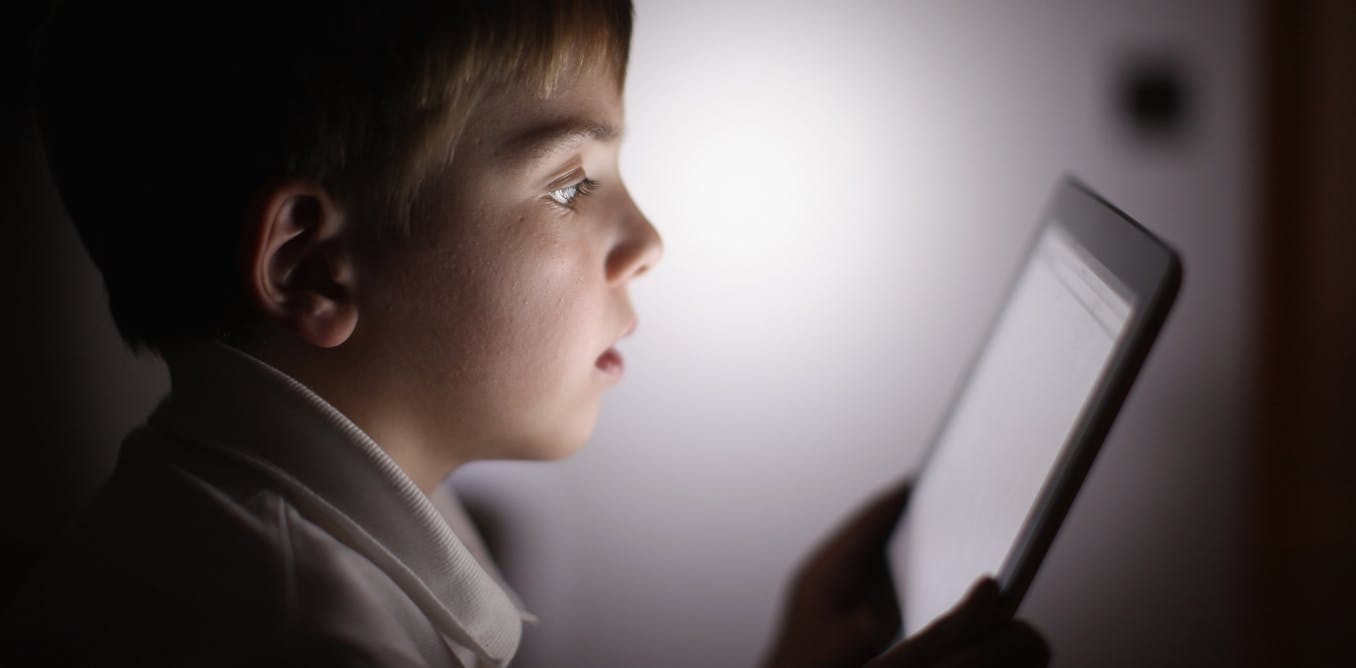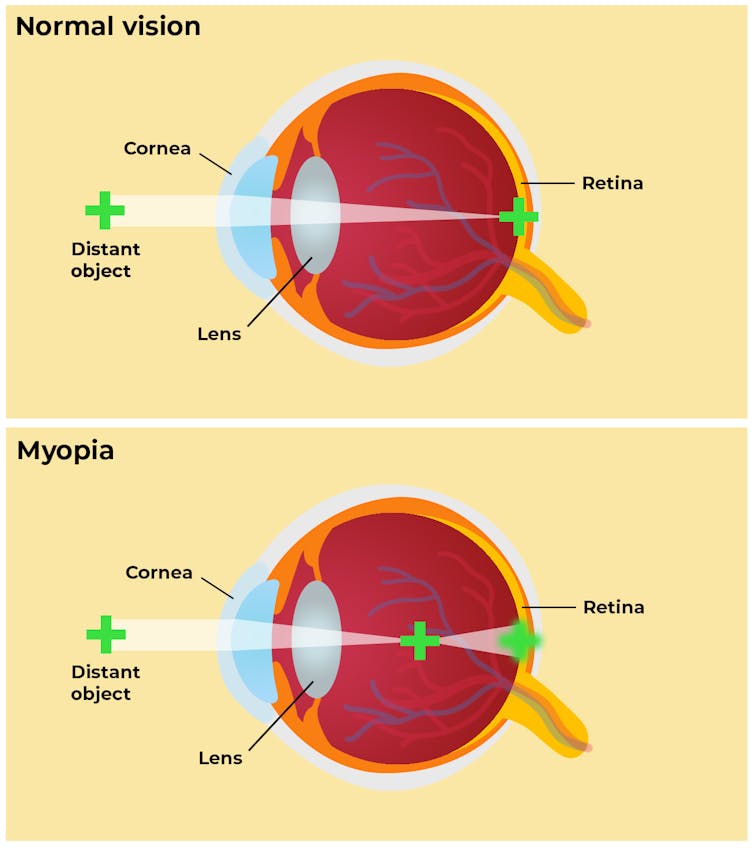COVID-engendered Myopia
"I'm seeing kids who've come in and have been doing a lot of online schooling and their myopia is starting to creep up.""[A 20/20/20 rule can help: Every 20 minutes look at something 20 feet away for 20 seconds...[It helps you refocus, relax the muscle and recalibrate the eyes."Thomas-Alexandre Noel, past-president, College of Optometrists of Ontario"It's the young children who've been cooped up inside. They've been on screens a lot, and in some cases it's not a choice because schooling has been online.""For a child that's going to school, they're outside on their way to school. They have recess twice a day. There is lunch time. It's easy to get 90 minutes [outdoors].""I don't know how I'd manage if I had young kids at home. We're not pointing a finger at parents and saying, 'You've damaged your child'. It's just the circumstances."Deborah Jones, clinical professor in optometry and visual science, University of Waterloo
 |
| With online learning, children are staring at computer screens for more hours each day. Christopher Furlong/Getty Images |
Chinese researchers tracked the eye tests of more than 120,000 children between the ages of six and 13 in the city of Feicheng in June of 2020, following the lockdown of over six months in the region. Their studies indicated rates of myopia during the pandemic were between 1.4 and three times higher than over the previous five years, before the pandemic struck. Their paper was published in the American Medical Association journal JAMA Ophthalmology.
Rates of myopia -- short-sightedness -- have been increasing for several decades. Now, with the presence of the global pandemic of the SARS-CoV-2 virus causing COVID-19 and associated increased focus on screens, the growing prevalence of the eye condition has accelerated. Eye experts are increasingly convinced there is a direct cause-and-effect between COVID, social isolation and serious eye strain among all age groups.
An alarming increase in myopia has been seen in China, among children who had undergone lock-down and become home-bound as a result of the threatening infectiousness of COVID-19. A greater risk of developing more serious eye problems later in life, including glaucoma, detached retinas and macular degeneration attends the future health of the eyes of young children who develop myopia.
 |
Eyesight tends to stabilize as children mature; between the ages of 16 and 20. A child who is struck with nearsightedness in the early teens will have an improved chance of evading future serious eye problems, as opposed to a child whose myopia develops at age six or seven. A greater risk of developing extreme eye conditions threatens young children who develop myopia, so the longer it takes for the onset of myopia to develop the better the future of young children.
A simple, practical solution is at hand, experts say. Ninety minutes daily of outside exposure makes a difference. For children in lockdown, likely at home with parents working from home who depend on screens to help their children keep occupied, that 90 minutes of outdoor exposure may be more difficult to attain. Even as the global pandemic is accelerating myopia rates, there is an acknowledgement that worldwide, greater swaths of populations are becoming short-sighted.
 |
| During this pandemic, kids are spending a lot more time online – and it may be affecting their eyesight. |
According to the World Health Organization, in 2010, 28 percent of the world population was myopic, a situation set to increase, with predictions that bv the year 2050 half the world population will be myopic. "It's a massive increase and it begs the question, 'What has changed in the last few decades"? Professor Jones asks provocatively. "And, of course, one of the things is screens and the amount of screen time."
More accurately perhaps, it seems that working at short distances appears the reason vision is failing. Children whose eyes focus at short distances tend to hold their devices a mere few centimetres away from their noses.
 |
In the case of adults, too much screen time can lead to eye strain, most particularly so if eyes are of different strength. And then there is painful dry eye. Normally people blink 16 times every minute. When focusing on a screen, five or six times a minute may become the average blink time resulting in eyes becoming dry and irritated. That's when it becomes sensible to kick in the 20/20/20 formula.
Labels: Children's Vision, Complications, Global Pandemic, Myopia

0 Comments:
Post a Comment
<< Home